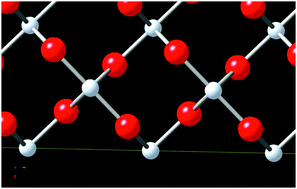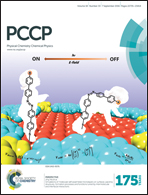An in situ FTIR spectroscopic and thermogravimetric analysis study of the dehydration and dihydroxylation of SnO2: the contribution of the (100), (110) and (111) facets†
Abstract
Nanoparticulate SnO2 produced by a hydrothermal method was characterised by BET, XRD, TGA-MS and in situ variable temperature diffuse reflectance infra red spectroscopy (DRIFTS) to determine the surface behaviour of water. For the (100) facets, hydrogen bonding does not occur, and water adsorption is less strong than for the (111) and (110) facets where hydrogen bonding does occur. Reversible uptake of oxygen was observed. These findings have implications for other surface-gas reactions in which Ni and Sb co-doped SnO2 (NATO) anodes are used for ozone generation. BET showed the relatively high surface area and nanometer scale of the SnO2 particles, whilst XRD confirmed the nano dimension of the crystallites and showed only the cassiterite phase. TGA analysis indicated four temperature regions over which mass loss was observed. These and the in situ DRIFTS studies revealed the existence of various forms of water associated with specific crystal facets of the SnO2, as well as the existence of isolated O–H groups and adsorbed oxygen species. Electronic absorptions were also observed and the data rationalised in terms of the existence of both free electron absorptions, and absorptions from oxygen vacancy states. The role of adsorbed molecular oxygen in electrochemical ozone generation at Ni and Sb co-doped SnO2 (NATO) anodes was strongly suggested by this work.


 Please wait while we load your content...
Please wait while we load your content...